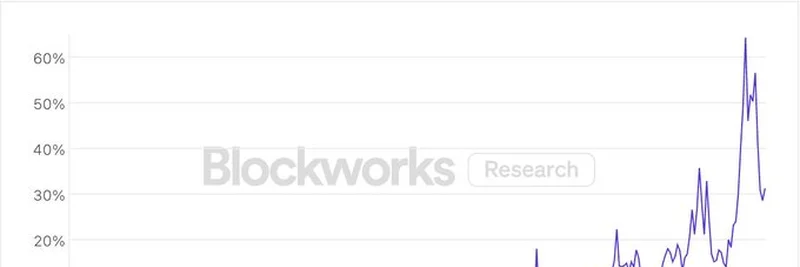Hey there, crypto enthusiasts! If you’ve been keeping an eye on the blockchain space, you’ve probably noticed a buzz around decentralized exchanges (DEXs) lately. A recent tweet from Keith Grossman, shared on August 9, 2025, highlights some fascinating data from Blockworks Research that’s got everyone talking. The tweet points to a significant shift in trading behavior, with the DEX-to-CEX (centralized exchange) spot volume ratio hitting 31% as of last week. Let’s break this down and explore what it means for the future of crypto trading!
What’s the DEX-to-CEX Volume Ratio All About?
First things first—let’s clarify what this ratio is. The DEX-to-CEX spot volume ratio compares the trading volume on decentralized exchanges to that on centralized ones. Think of it like a tug-of-war between two types of platforms. Centralized exchanges (CEXs) like Binance or Coinbase are run by a single company, making them easy to use but sometimes less secure due to potential hacks or centralized control. On the other hand, DEXs operate on blockchain technology, letting users trade peer-to-peer without a middleman, offering more security and privacy.
The chart shared by Grossman, courtesy of Blockworks Research, shows this ratio over time. Back in late 2020, the ratio spiked briefly, but it stayed low for a while. Fast forward to 2025, and we see a dramatic upward trend, especially in the last year. That 31% figure means DEXs are handling nearly a third of the spot trading volume compared to all CEXs combined—pretty impressive, right?
Why Are DEXs Gaining Traction?
So, what’s driving this shift? Grossman’s tweet adds a playful nudge with “Ensure safe CEX, use a DEX! 😷🤣,” hinting at the security concerns that have plagued CEXs in the past. High-profile hacks, like the ones on Binance, have made users wary of entrusting their funds to a single entity. DEXs, with their decentralized nature, reduce this risk by letting you keep control of your assets via your wallet.
Another factor is the growing popularity of meme tokens and other niche cryptocurrencies. Many of these tokens start on DEXs because CEXs often have strict listing requirements. As more people dive into projects like Dogecoin or Shiba Inu, DEXs become the go-to spot for trading. Plus, with the crypto community pushing for decentralization (as seen in replies like “The Revolution Will Not Be Centralized”), the ideological appeal is strong.
What Does This Mean for Crypto Traders?
This 31% ratio is a signal that DEXs are no longer just a niche option—they’re becoming a major player. For traders, this could mean more opportunities to explore decentralized platforms like Uniswap or PancakeSwap. However, it’s not all smooth sailing. DEXs can be trickier to navigate, especially for beginners, and they often lack the customer support you’d get from a CEX.
Looking at the chart, the recent spike suggests something big might be happening in the market. Could it be a reaction to new regulations, a surge in meme token trading, or just growing trust in blockchain tech? Whatever the cause, it’s a trend worth watching as we move through 2025.
The Meme Insider Take
At Meme Insider, we’re all about keeping you in the loop on how meme tokens and blockchain tech evolve. This rise in DEX volume could open doors for meme token traders, especially as these platforms often host early listings. If you’re a blockchain practitioner or just a curious investor, now might be the time to brush up on DEXs and explore how they fit into your strategy.
What do you think about this shift? Are you ready to dive into DEX trading, or do you prefer the familiarity of CEXs? Drop your thoughts in the comments, and stay tuned for more updates from the wild world of crypto!



